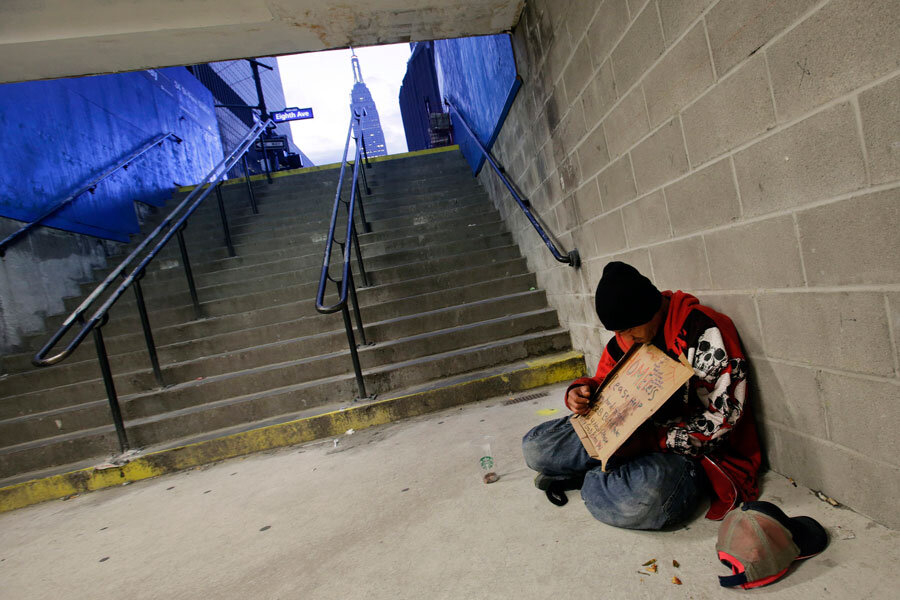Reports of child abuse in shelter, spotlight struggles facing homeless families
Loading...
Domestic violence and child abandonment are common occurrences in New York City homeless shelters, suggests a new report published Wednesday by the New York Daily News.
According to 2015 reports obtained by the paper, multiple cases of abandoned children were reported across homeless shelters in January, February, July, September, and October. In one case New York Police officers found two children, ages six and eight, locked alone in a room for almost 24 hours. And in another case, eight children were removed from a mother who reported using one bag of cocaine and heroin a day. The paper also found several incidents of physical abuse.
The revelations shine a light on the unique challenges families living in shelter face. Being homeless is a stressful experience for both children and parents and the trials of shelter-life can exacerbate existing problems, such as drug abuse and a lack of childcare, advocates for homeless families say.
“In general, families in shelters have themselves experienced a lot of trauma and generational poverty, and with that typically brings families with chemical dependence, and histories of domestic and sexual violence,” Daniel Gumnit, director of People Serving People, a family homeless shelter in Minneapolis, tells The Christian Science Monitor in a phone interview Wednesday. Mr. Gumnit points out the length of families’ shelter stays in New York City: about 460 days.
Many of the issues contributing to familial disfunction in the shelter system stem from the same societal woes that are driving families into emergency housing. Getting families into more appropriate housing – and keeping them there – requires a holistic approach that addresses not just housing needs, but systemic issues, such as drug use, income disparity, transportation access, and early childhood education, says Gumnit.
New York's shelter system has been under heightened scrutiny of late, after a series of stabbings.
After a 90-day review of New York City’s homeless services, Mayor Bill de Blasio announced new security measures for the city’s shelters Tuesday. To improve the safety of shelters, The New York Police Department will retain all security staff at the Department of Homeless Services and institute a more extensive reporting system for shelter incidents, as the Monitor’s Lonnie Shekhtman reported on Tuesday.
“Shelters out here are not shelters – they’re sometimes worse than the streets,” Jeremiah Murphy, a resident of a homeless shelter in Queens, the El Camino Inn, told The Christian Science Monitor in January. “A lot of people don’t want to go to the shelter because they’ve got to worry about people stealing your stuff. People have knives and guns and stuff – and I’m supposed to feel some sort of safe haven?”
But more attention needs to be directed towards family safety, say advocates. Over the past two years New York City shelters have admitted almost 60,000 people, including almost 24,000 children. The National Center on Family Homelessness suggests that families represent over one-third of the overall homeless population.
“Our review showed that more needs to be done to address domestic violence for families that have been placed in shelter together,” Steven Banks, head of the Human Resources Administration and the Homeless Services Department, says at a City Council budget meeting.
The review found that domestic violence accounted for 60 percent of all violence in family shelters. And according to a report by the National Center on Family Homelessness, 83 percent of homeless children have been exposed to at least one serious violent event by the age of 12 and almost 25 percent have witnessed acts of violence within their families.
“Security at the entrance to the shelter is not going to address what’s happening in that family unit,” Christine Quinn, head of Win, a nonprofit that helps homeless women, told the Daily News. “Many of these families come from violence or bring the violence with them. Violence can continue within the family structure. Also, children who end up in shelters are suffering the trauma of homelessness and the trauma of violence.”
Along with re-introducing a domestic violence program in the shelters that was ended in 2010, the city plans to spend $2.9 million on the issue. Some future solutions include adding 300 emergency beds and 400 family units, specifically set aside for shelter residents who are victims of domestic violence.
“You’ve got to understand you’re dealing with different personalities in the shelter, people with different problems,” Tony Hunter a resident of the Crotona Inn family shelter in the Bronx, told the Daily News. “So it’s like the whole world in one unit. So it’s hard. You go through a lot in the shelter.”






